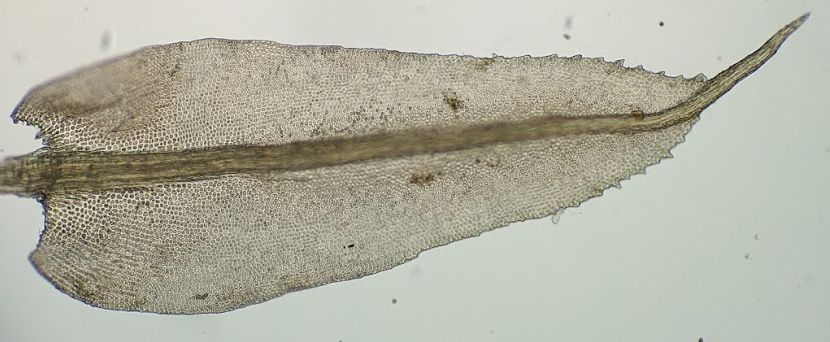Leptotheca
Dioicous. Asexual reproduction by filamentous red-brown gemmae on upper stem between leaves. Tufts on soil, rocks, logs, tree ferns and tree trunks. Stems erect, simple, forking or branching by innovation, tomentose in basal half; central strand present. Leaves linear to ovate-lanceolate or elliptic, imbricate, erect- to wide-spreading when moist with apices curled toward stem, more erect and slightly twisted and folded along costa when dry; apex obtuse, acute or acuminate; costa strong, single, percurrent (not in Victoria) to excurrent; margins denticulate to serrate toward apex, plane or recurved, without a border; laminal cells circular to rounded-quadrate, sometimes rectangular at base, smooth; alar cells not differentiated. Acrocarpous. Capsules vertical to horizontal, sraight or curved, cylindric, with an annulus. Calyptra cucullate, smooth, glabrous. Operculum conic or rostrate. Peristome double; exostome of 16 entire teeth; endostome of 16 segments slightly shorter than exostome, with a basal membrane 1/4–1/3 of exostome height; cilia present.
Currently comprising two species, one in Australia and L. boliviana Herzog from the Americas (Churchill & Buck 1982).
Some phylogenetic analyses of chloroplast DNA sequences determined that L. boliviana was more closely related to Hymenodon pilifer that it is to the other Leptotheca species, L. gaudichaudii (Bell et al 2007; Tessler 2012). Further sampling of populations and DNA regions and study is required to confirm this relationship.
 Spinning
SpinningBell, N.E.; Quandt, D.; O’Brien, T.J.; Newton, A.E. (2007). Taxonomy and phylogeny in the earliest diverging pleurocarps: square holes and bifurcating pegs. The Bryologist 110: 533–560.
Churchill, S.P.; Buck, W.R. (1982). A taxonomic investigation of Leptotheca (Rhizogoniaceae). Brittonia 34: 1–11.
Tessler, M. (2012). A monograph of Hymenodon (Orthodontiaceae). The Bryologist 115: 493–517.


